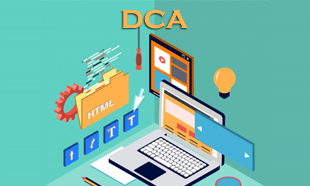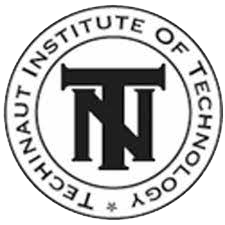0
Diploma in Computer Application" at Verma Computer Institute, Hazratganj, Lucknow, Uttar Pradesh, affiliated with Techinaut Institute of Technology, offers comprehensive training in software applications, programming languages, and IT concepts, preparing students for diverse roles in the technology sector.
DIPLOMA IN COMPUTER APPLICATION
Verma Computer Institute, nestled in the heart of Hazratganj, Lucknow, Uttar Pradesh, is a beacon of computer education excellence. This comprehensive review delves into the six-month Diploma in Computer Application (DCA) course offered by Verma Computer Institute, a Techinaut Institute of Technology franchise. The course aims to equip students with essential computer skills and knowledge, enabling them to navigate the digital landscape with confidence and proficiency.
THE OBJECTIVE OF THE COURSE:
The primary objective of the Diploma in Computer Application (DCA) course at Verma Computer Institute is to empower students with practical skills and theoretical knowledge in various aspects of computer applications. Throughout the six-month duration, students undergo comprehensive training covering the basics of computers, computer organization, operating systems, word processing, spreadsheet packages, presentation packages, internet usage, electronic mail, and more. The course is meticulously designed to prepare students for entry-level positions in various industries requiring computer proficiency or to pursue higher education in computer-related fields.
Section 1: Basics of Computer
This section lays the foundation by introducing students to a computer system's basic concepts and components. Topics covered include:
Introduction to Computers: Students learn about computers' history, evolution, and importance in modern society. They understand the essential components of a computer system, including hardware, software, input devices, output devices, and storage devices.
Computer Hardware and Software: Students delve into the intricacies of computer hardware and software. They learn about different types of hardware components, such as the CPU, memory, storage devices, peripherals, and various software categories, including systems, applications, and utilities.
Section 2: Computer Organization
This section focuses on understanding a computer system's internal structure and organization. Topics covered include:
CPU and Memory: Students learn about the central processing unit (CPU), its role in executing instructions, and different types of memory, including RAM and ROM.
Storage Devices: Students explore various storage devices, such as hard drives, solid-state drives (SSDs), optical discs, and flash drives, and understand their functions and differences.
Input and Output Devices: Students learn about input devices (e.g., keyboard, mouse, scanner) and output devices (e.g., monitor, printer, speakers) and their respective roles in computer operation.
Section 3: Operating System
This section introduces students to operating systems and their functions. Topics covered include:
Introduction to Operating Systems: Students learn about the purpose and functions of operating systems, including managing hardware resources, providing a user interface, and running application software.
Types of Operating Systems: Students explore different types of operating systems, such as Windows, macOS, Linux, and mobile operating systems, and understand their features and differences.
Operating System Navigation: Students gain practical experience in navigating and using common operating system features such as file management, system settings, and security options.
Section 4: Word Processing
This section focuses on developing proficiency in word processing software for creating and editing documents. Topics covered include:
Introduction to Word Processing: Students learn about the benefits and features of word processing software and understand its role in creating text-based documents.
Using MS Word: Students gain hands-on experience with Microsoft Word, exploring features such as document creation, formatting, editing, spell-checking, and printing.
Section 5: Spreadsheet Package
This section introduces students to spreadsheet software and its applications. Topics covered include:
Introduction to Spreadsheets: Students learn about the purpose and benefits of spreadsheets and understand their role in organizing and analyzing data.
Using MS Excel: Students gain practical experience with Microsoft Excel, learning how to create spreadsheets, enter data, perform calculations, format cells, and create charts.
Section 6: Presentation Package
This section focuses on creating visually appealing presentations using presentation software. Topics covered include:
Introduction to Presentations: Students learn about the importance of presentations in communication and decision-making processes and understand the role of presentation software in creating engaging slideshows.
Using MS PowerPoint: Students explore Microsoft PowerPoint, learning to create slides, add text, images, and multimedia elements, apply themes and transitions, and deliver effective presentations.
Section 7: Introduction to the Internet
This section introduces students to the world of the internet and its applications. Topics covered include:
Basics of the Internet: Students learn about the history and development of the internet and understand its role in connecting people, organizations, and information worldwide.
Browsing the Web: Students gain practical experience using web browsers to navigate the internet, search for information, visit websites, and bookmark their favourite pages.
Section 8: Electronic Mail
This section focuses on email communication and etiquette. Topics covered include:
Introduction to Email: Students learn about the benefits of email communication and understand its role in professional and personal contexts.
Using Email Clients: Students gain practical experience with email clients such as Outlook, Gmail, and Yahoo Mail, learning how to compose, send, receive, reply to, and organize emails.
CONCLUSION:
The Diploma in Computer Application (DCA) course offered by Verma Computer Institute equips students with the essential computer skills and knowledge required for success in today's digital world. Students develop the proficiency and confidence to excel in various professional and academic pursuits through a comprehensive curriculum covering computer fundamentals, computer organization, operating systems, word processing, spreadsheet packages, presentation packages, internet usage, and electronic mail. Graduates of the course emerge as competent computer users, prepared to embark on rewarding careers or pursue further education in computer applications.


